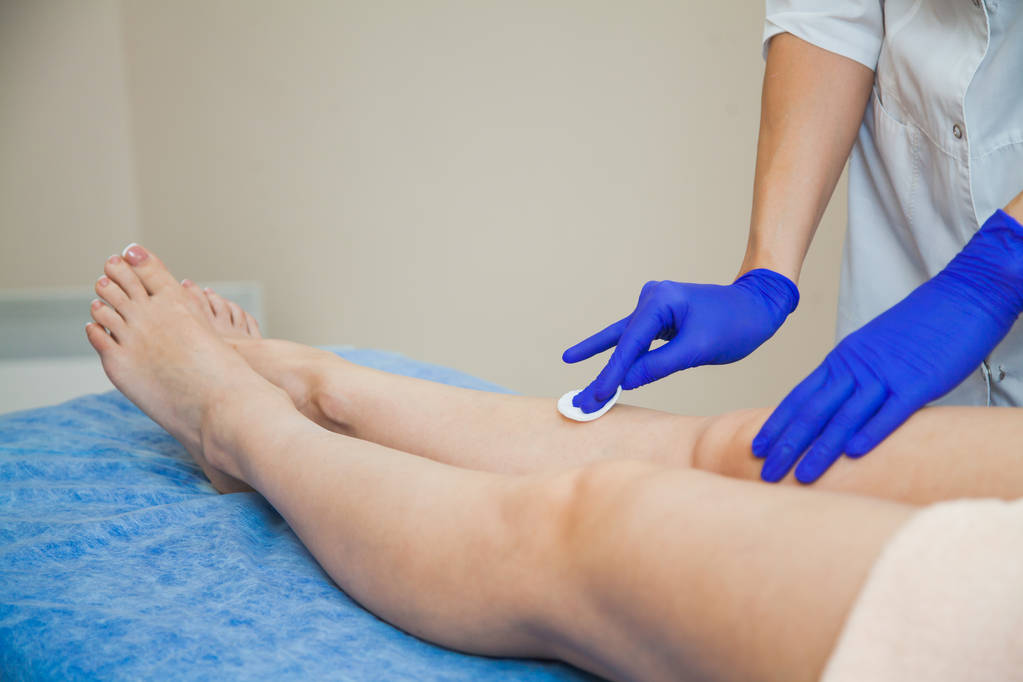When it comes to hair removal, sugaring is growing in popularity thanks to its natural approach.
But for the best results, there’s one key question you need to consider: what’s the ideal hair length for sugaring?
The short answer is that the ideal hair length is typically 1/4 to 1/2 inch. This goldilocks hair length allows the sugaring paste to really grip each strand properly to remove it from the root smoothly.
But there’s more to this than just numbers. I’m going to uncover why this ideal hair length matters in the world of sugaring.
Key Takeaways:
- Recommended range: 1/4 to 1/2 inch (6 to 12 mm) for effective paste adhesion and root removal.
- Crucial for successful sugaring; too short or too long poses challenges in paste grip and removal.
- Tangling in paste, discomfort, potential breakage, and uneven removal.
- Use ruler, tape measure, or specific tools for accurate length assessment.
- Post-sugaring exfoliation prevents ingrown hairs, promotes healthier regrowth.
- Pre-sugaring prep involves cleansing, powdering, and exfoliation for smoother removal.
- Consider skincare routines, growth inhibitors, or professional treatments for regrowth management.
Importance of Hair Length
Why hair length matters
As you now know, your hair length plays a important role in the success of the sugaring process.
For the sugar paste to effectively remove the hair, it needs to be long enough to adhere to the paste.
If your hair is too short, the paste won’t grip it properly, and your hair won’t necessarily be removed as intended.
Ideal Hair Length for Sugaring
Recommended hair length for sugaring
The recommended hair length for sugaring is typically around 1/4 to 1/2 inch (6 to 12 mm).
This length allows the sugaring paste to adhere to the hair properly and ensures a clean removal from the root.
Reasons for the ideal hair length in sugaring
The ideal hair length for sugaring is carefully chosen for a few reasons.
Shorter hair can make it difficult for the paste to grip the hair properly, resulting in ineffective hair removal.
Longer hair, on the other hand, can become tangled in the sugaring paste, making it challenging to remove and potentially causing discomfort.
The recommended hair length strikes a balance between these two extremes, allowing for a smooth and efficient hair removal process.
Implications of Too Long Hair for Sugaring
Difficulties of sugaring long hair
Sugaring long hair can present its own set of challenges.
Longer hair length may cause the hair to become tangled in the sugaring paste, making it difficult to remove.
This can lead to discomfort during the hair removal process and potentially result in uneven hair removal.
Outcome of sugaring long hair
When sugaring long hair, there is a higher chance of breakage instead of complete hair removal.
The longer hair may not be effectively pulled out from the root, leading to subpar results.
Sugaring long hair may also require multiple applications of the paste to ensure all the hair is adequately removed, which can be time-consuming and cumbersome.
Measuring Hair Length for Sugaring
Methods to measure hair length
There are a few methods you can use to measure your hair length for sugaring.
One simple method is to use a ruler or a tape measure to determine the length of the hair.
Another approach is to visually gauge the length of the hair and compare it to the recommended hair length for sugaring.
Tools for measuring hair length
To measure your hair length accurately, you can use a ruler, a tape measure, or even a hair length measuring tool specifically designed for this purpose.
These tools provide a precise measurement, allowing you to determine if your hair is within the recommended range for sugaring.
Preparation for Sugaring According to Hair Length
Preparing your skin for sugaring
Before sugaring, it’s important to properly prepare your skin to ensure optimal results.
This includes cleansing the skin to remove any dirt or oils that could interfere with the sugaring process.
Applying a thin layer of baby powder or cornstarch to the skin can help absorb any moisture or oils, making it easier for the sugaring paste to adhere to the hair.
Importance of skin exfoliation before sugaring
In addition to preparing your skin for sugaring, it is essential to exfoliate the skin beforehand.
Exfoliation helps remove dead skin cells and unclog pores, allowing for a smoother and more effective hair removal process.
By exfoliating, you can also help prevent ingrown hairs, which can be a common concern after hair removal.
Effective methods for slow and healthy hair regrowth
While it’s not possible to completely stop hair regrowth, there are methods you can employ to slow it down and promote healthy regrowth.
Regularly exfoliating the skin can help prevent ingrown hairs and promote smoother regrowth.
Adopting a proper skincare routine and considering hair growth inhibitors or professional treatments can also help manage hair regrowth between sugaring sessions.
Conclusion
So, what’s the takeaway on sugaring hair length? Following that sweet spot of 1/4-1/2 inch is your best bet. Straying too far in either direction seems to spell trouble.
Too short and you risk the paste not grabbing hold for removal. Too long, and things get tangled and trickier.
Considering how precise the preparation is – exfoliating, powdering, and priming so the paste can really grip each hair, it makes sense you’d want hair that’s long enough to cooperate, but short enough not to cause issues.
That tiny length window helps strike that ideal balance.
I’d say assess your growth, trim if needed, but don’t go too short. Measure if you want to get technical.
Just ensure you’re in that hair length goldilocks zone before applying the paste so it can really work its magic.
Do that, and you’ll be smooth and stubble-free in no time.
Then just exfoliate afterwards as things grow back so you avoid bumps, keep the regrowth on an even keel, and prep properly for your next sugaring session down the line.

